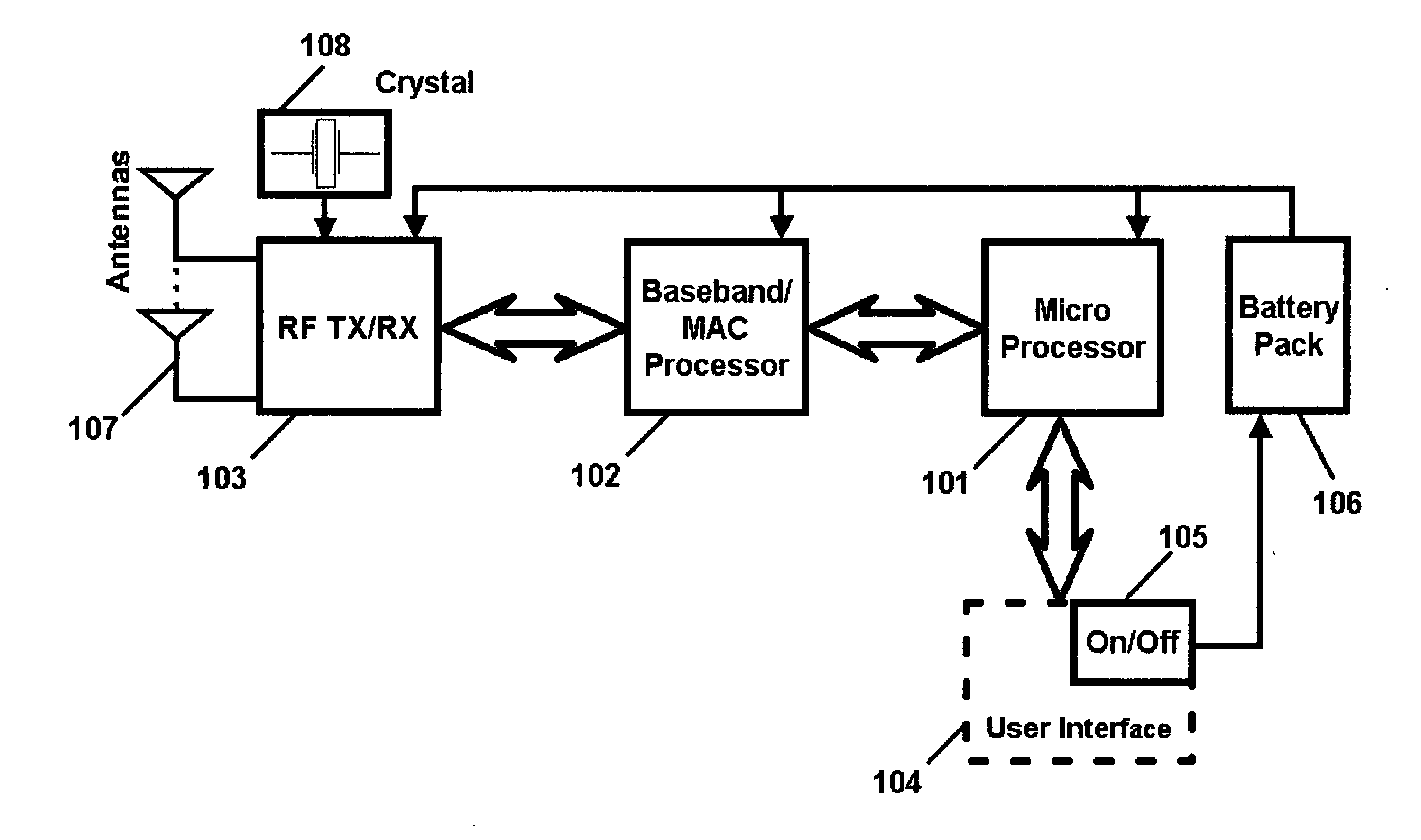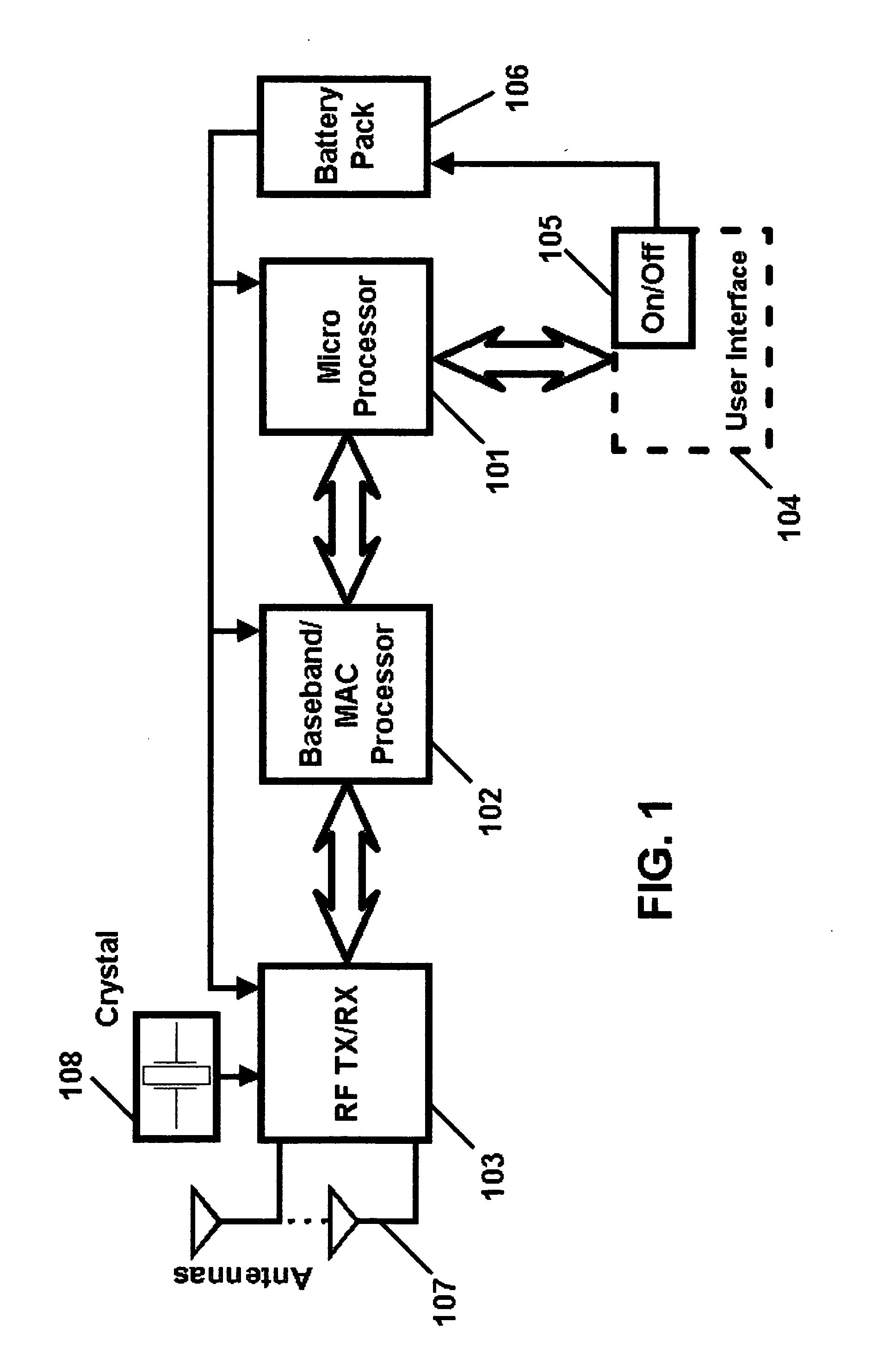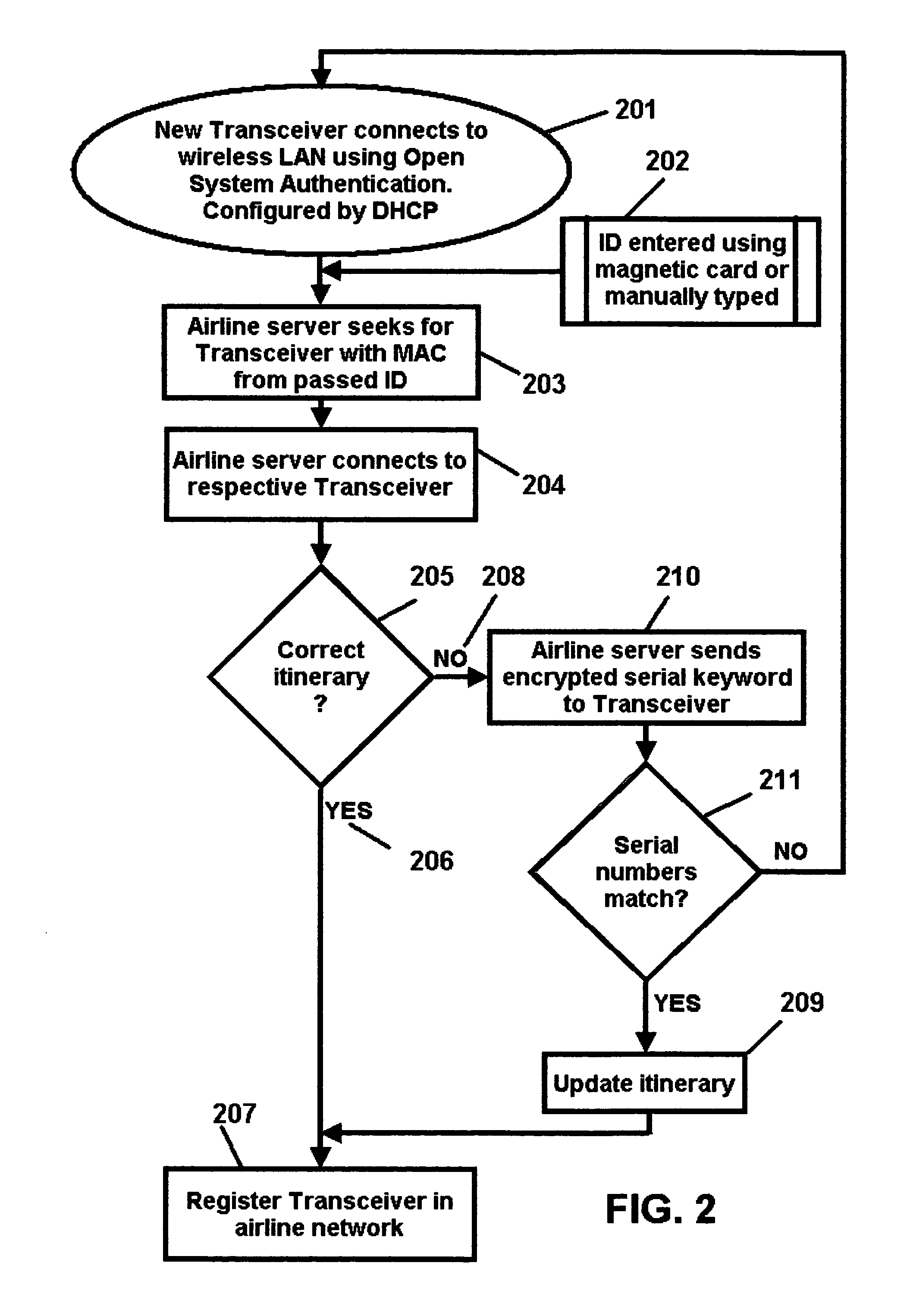Intelligent air travel tag for asset self-tracking
a self-identification and intelligent technology, applied in the direction of visible signalling system, electric/electromagnetic visible signalling, security arrangement, etc., can solve the problems of limiting the market penetration of such rfid tag system, direct costs of tens of millions of dollars for recovering and delivering misdirected, indirect costs resulting from customer dissatisfaction, etc., to speed up the re-routing of mishandled luggag
- Summary
- Abstract
- Description
- Claims
- Application Information
AI Technical Summary
Benefits of technology
Problems solved by technology
Method used
Image
Examples
Embodiment Construction
[0040] Throughout the following description, specific details are set forth in order to provide a more thorough understanding of the invention. However, the invention may be practiced without these particulars. In other instances, well known elements have not been shown or described in detail to avoid unnecessarily obscuring the invention. Accordingly, the specification and drawings are to be regarded in an illustrative, rather than a restrictive, sense.
[0041]FIG. 1 is a block diagram showing main functional parts of a transceiver according to one embodiment of the invention. Its intelligence resides in the microprocessor block 101, where the transceiver's State Machine (described below with reference to FIG. 3) is implemented. The baseband / MAC processor 102 supports the RF radio transmission / reception (RF TX / RX block 103). To achieve this, it is preferable that the former may include a DC / DC converter, RAM and ROM memories, and analog-to-digital and digital-to-analog converters. I...
PUM
 Login to View More
Login to View More Abstract
Description
Claims
Application Information
 Login to View More
Login to View More - R&D
- Intellectual Property
- Life Sciences
- Materials
- Tech Scout
- Unparalleled Data Quality
- Higher Quality Content
- 60% Fewer Hallucinations
Browse by: Latest US Patents, China's latest patents, Technical Efficacy Thesaurus, Application Domain, Technology Topic, Popular Technical Reports.
© 2025 PatSnap. All rights reserved.Legal|Privacy policy|Modern Slavery Act Transparency Statement|Sitemap|About US| Contact US: help@patsnap.com



